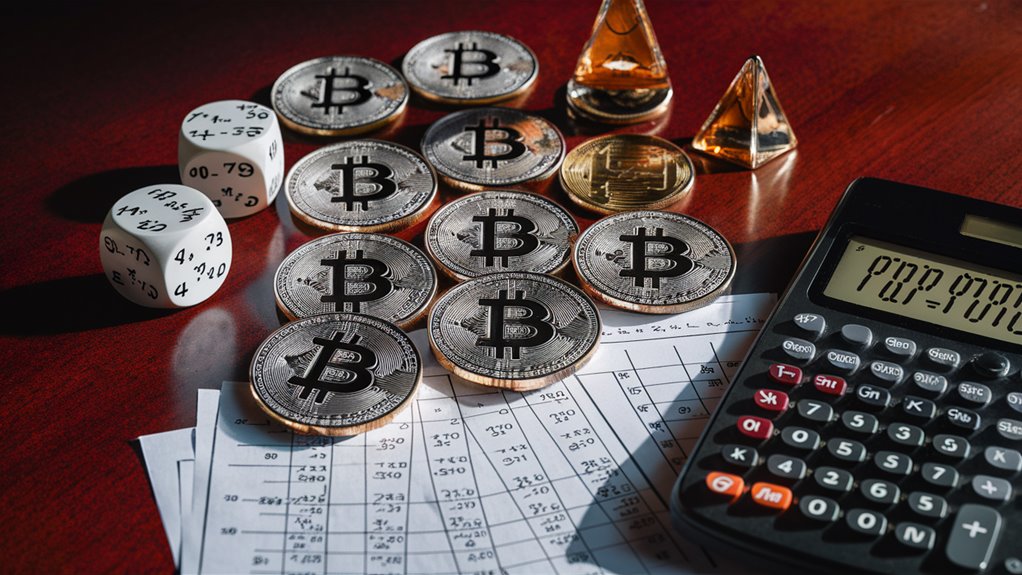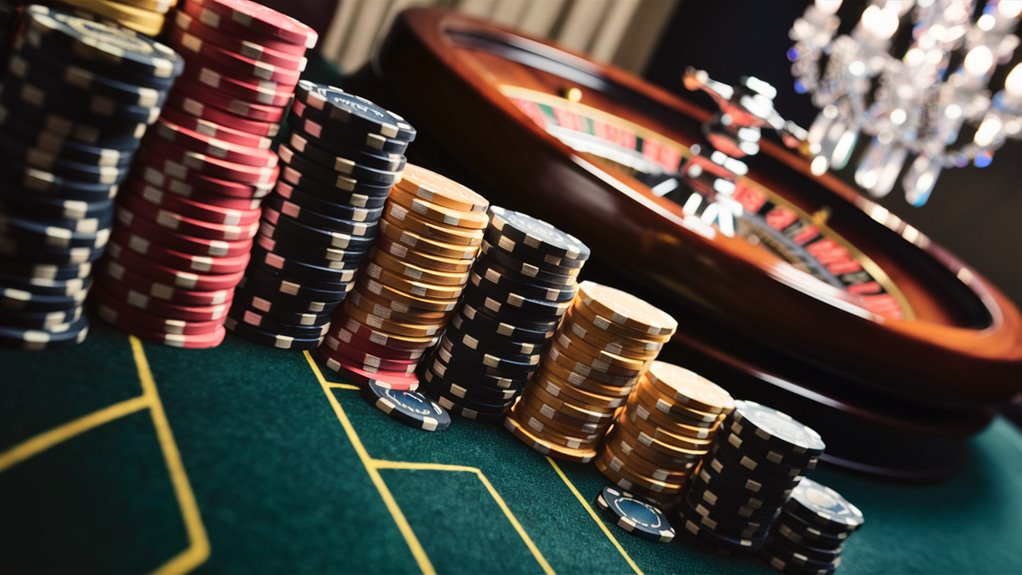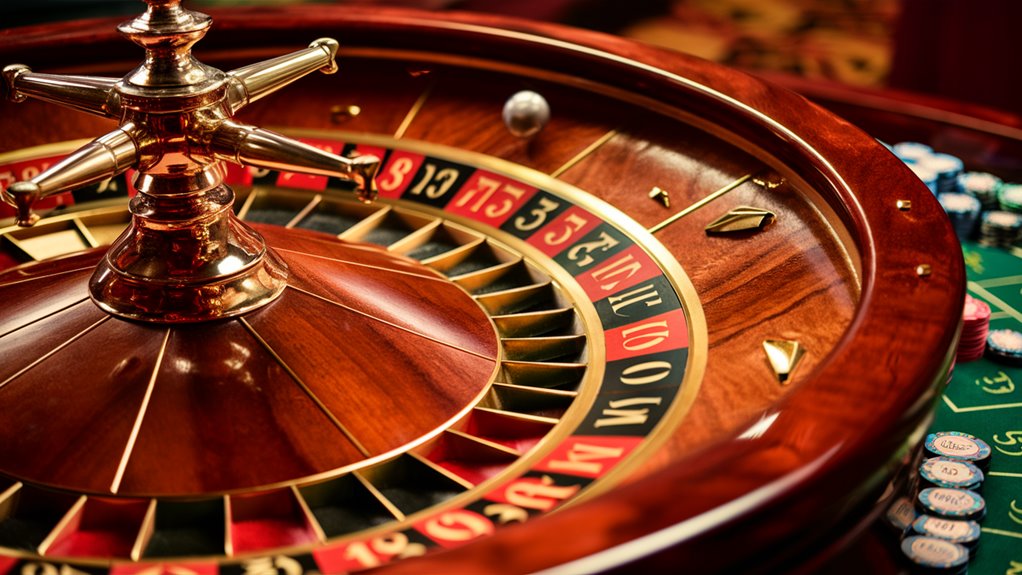The Mind and Math of Cryptocurrency Trading
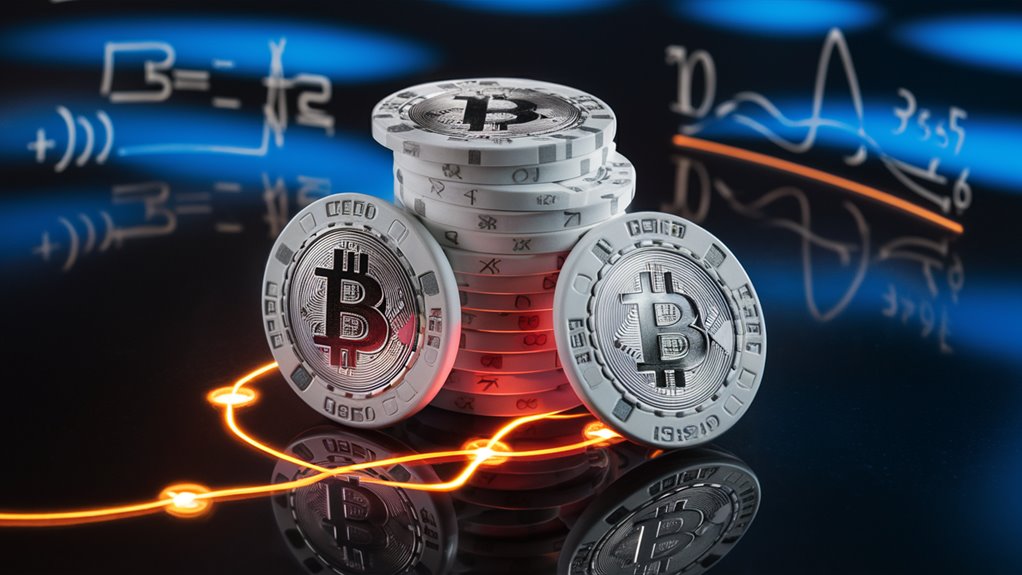
How Trading Affects the Brain
The link between cryptocurrency trading and our brain’s joy system is much like how we act when we gamble. Studies tell us that trading can cause dopamine levels to rise by up to 40% during trades, and even higher, 60% spikes, when trades work out. This chemical in our brain makes us want to keep trading, affecting our choices. 이 자료 참고하기
The Math of Risk and Gain
Math says we feel losses 2.5 times more than gains, a fact known as loss hate. This fear greatly sways how we trade. Also, almost-winning moments make dopamine spike by 75%, locking traders in a cycle of active trading.
Getting Hooked on Trading
Stats point to cryptocurrency traders having a 3.2 times higher chance of addiction than gamblers. Yet, using systematic steps in trading, with rules like only risking 1-2% per trade, can check these natural urges.
Plan Ways to Fight Psychological Traps
- Clear signs for unbiased choices
- Strict money rules per trade (1-2% risk)
- Risk handling setups to beat mind tricks
- Strict plans based on number game
Knowing these brain and number rules is key to stay in control and make money in crypto trading over time.
The Role of Dopamine in Trading
How Dopamine Affects Crypto Trading
Brain Patterns in Digital Trade
The way dopamine works in crypto trading is very much like in casinos, but more intense. Watching the brain during crypto trades shows the same reward pathway light up as in gambling, only stronger due to non-stop market hours.
Dopamine Highs in Trading Moments
- While Waiting: 40% rise in dopamine during waiting for trade to seal
- When Winning: 60% jump when the trade is a win
- Almost-Wins: 75% dopamine jump, pushing loss-chasing
These intense brain reactions push a stronger chase for rewards, possibly leading to deeper addiction patterns in crypto trading than regular gambling.
Expecting Trading Returns: The Brain Angle
How the Brain Judges Trading
How the Brain Judges Trading
Thinking of potential rewards (RPE) changes how traders see market outcomes. This core brain function measures the space between what we think will happen and what does, making us learn and choose tactics in the crazy crypto market.
How Good vs. Bad Results Change our Thinking
When trades do better than hoped, a good reward error happens, raising dopamine by about 40% from normal. But, a bad reward prediction happens when things don’t go as hoped, cutting down dopamine. This way of reacting deeply shapes how we trade and see risks.
The Real Math in Trading Well
When looking at trading mindsets, math models show clear RPE patterns. A 5% better outcome than hoped (like getting 15% not 10%) boosts risk wants by 28% in the next trades. Bad reward effects hit 1.5 times harder than equal gains, making traders need at least a 2:1 win-to-risk ratio to stay calm.
Setting Rules for Safer Trading
- How dopamine changes impacts choices
- Loss fear tweaks how much risk we can handle
- Trading mind needs a careful balance
- Reward-risk numbers must think of RPE unevenness
- What’s expected from the market shapes how we act
Mind Tricks in Trading Choices
Understanding Mind Tricks in Crypto Trading
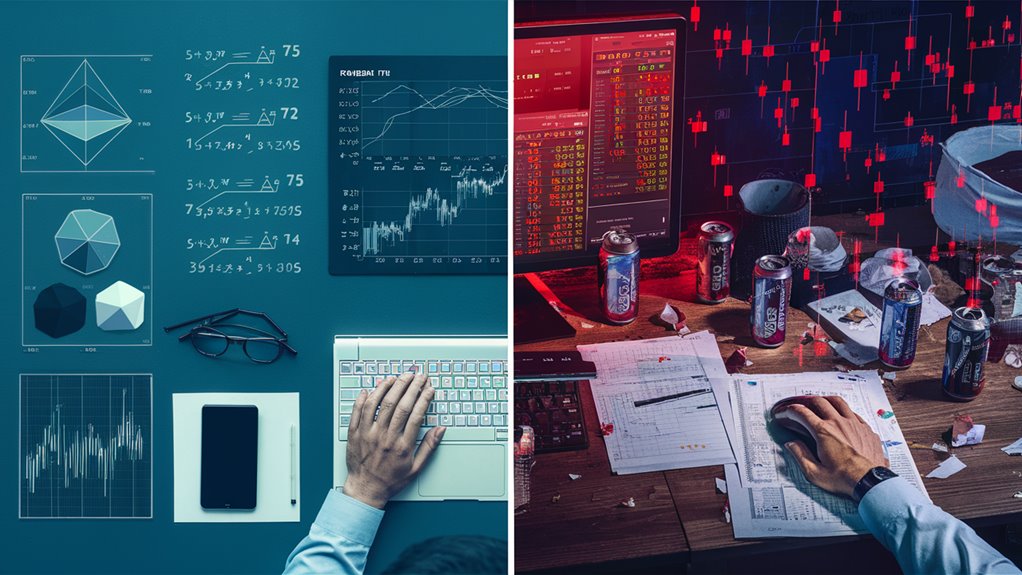
Main Mind Tricks Hitting Crypto Gains
Mind tricks can really change how we make crypto trading choices, possibly eating away up to 30% of possible gains. Three big mind tricks run the crypto trading world: confirmation trick, sticking to first numbers trick, and loss hate.
Seeing Only What We Want in Crypto
A huge 67% of crypto traders fall for the confirmation trick, only seeing info that backs their current choices and missing other key market hints. This behavior pattern leads to holding on too long, about 2.3 times longer than needed.
Sticking Too Much to First Numbers in Crypto
A large 78% of crypto traders are caught by the sticking to first numbers trick, basing choices on past numbers like starting prices or old highs. This mind limit leads to very bad starting and ending trading points, as traders stick to these old numbers above current market states and clear signs.
Trading Better by Knowing These Mind Tricks
Knowing and fighting these mind tricks is key to making better crypto trading tactics. Setting strict trading steps and clear risk rules helps lower the effect of mind tricks on trading actions.
Number Game vs. Heart-Led Trading in Crypto Markets
Numbers or Feelings: What’s Best in Crypto Trading?
The Edge in Data
Math models and number checks bring better results than trading on gut feels in crypto markets. Traders using steps like average lines and Fibonacci levels show way better results than those going by intuition. Stats find patterns and chances that feelings often miss.
Big Mistakes From Trading with Feelings
Usual Errors
Trading by feeling leads to three noted bad behaviors:
- Trading too much in uncertain times
- Keeping losing bets too long
- Ending winning bets too soon
Using number rules stops these by following clear steps and set end points, breaking the fear-greed loop common in crypto trading.
Blending Math Models Well
Using Data Wisely
Smart signs and betting by the odds build strong systems that push data-led choices. While number models can’t guess big shocks, they are good at:
- Finding odd market moves
- Seeing where the market isn’t right
- Keeping trading discipline
- Following planned strategies
Pairing number studies with clear trading steps makes a setup that prefers solid market facts over just gut ticks.
Judging Risks and Handling Losses in Crypto
Judging Risks and Managing Losses in Crypto Trading
Dealing with Loss Hate in Digital Money Worlds
Studying behavior finance reveals crypto traders show a 2:1 loss hate ratio, feeling losses way more than equal wins. This mind bias leads to a pattern where traders keep bad bets too long while ending good ones too soon, really messing with how much they make.
Mind Mistakes in Judging Risks
Risk check ways in crypto trading always show a 30-40% under-judging of real risk. This mind mistake starts in the brain’s two work ways: possible losses fire up the emotional part, while wins are thought through in the logical part. Using strict money rules and set stop-losses helps fight these heart-led errors. Apps Are Transforming the Casino Industry
Best Ways to Handle Risks
Good crypto traders keep a risk-per-trade rate at 1-2% of all money. This safe way lets traders handle 15-20 bad bets without big money loss. Actively managing loss hate and tight risk steps help traders do about 25% better in risk-checked gains over a long time.
Important Risk Handling Parts:
- Money rules
- Stop-loss use
- Money split in risk
- Mind trick checks
- Better outcome plans
